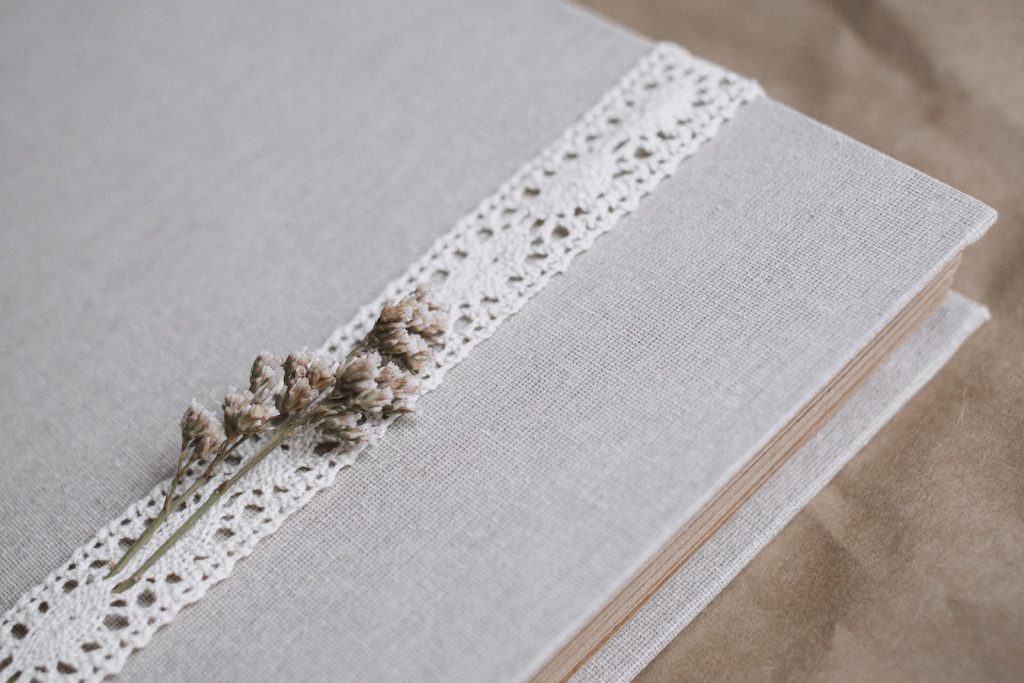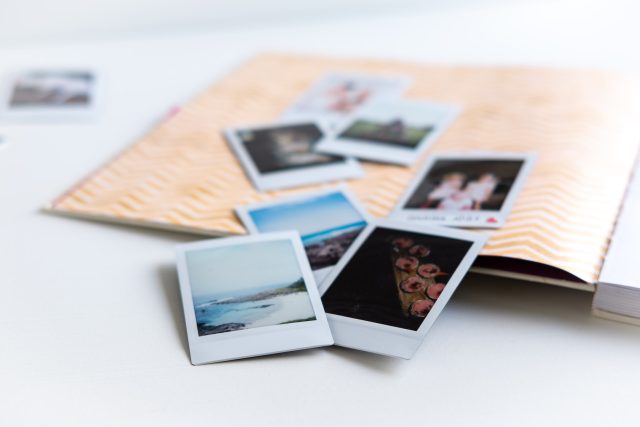Memory keeping is a beautiful way to preserve your cherished moments and milestones. Whether it’s your child’s first steps, your wedding day, or a family vacation, these memories are precious and deserve to be remembered for years. Scrapbooking is an excellent way to preserve these memories, and with so many tools and techniques available, it’s easy to create beautiful and unique layouts that reflect your personal style. In this beginner’s guide to scrapbooking for memory keeping, we’ll explore the basics, including supplies you’ll need, design ideas, and tips to get started. Whether you’re new to scrapbooking or a seasoned pro, this guide will help you create treasured keepsakes that you and your loved ones will enjoy for years to come.
Why Scrapbooking?
Scrapbooking has been around for centuries, but it has recently gained popularity as a form of memory keeping. In today’s digital age, where photos are taken and forgotten on our phones or social media feeds, scrapbooking provides a tangible and meaningful way to preserve our memories. So why scrapbook? Here are a few reasons:
- Preserving memories: Scrapbooking allows you to preserve your precious memories in a way that can be passed down through generations. It’s a way to relive and share those special moments with others.
- Creative outlet: Scrapbooking is a creative outlet that allows you to express yourself through design and storytelling. Whether you prefer a clean and simple look or a more elaborate style, scrapbooking provides endless possibilities for creativity.
- Stress relief: Scrapbooking can be a therapeutic and calming activity, allowing you to escape from the stresses of daily life and focus on something enjoyable and meaningful.
- Personalized touch: You can add a personal touch to your memories by scrapbooking. You can include special mementos, such as ticket stubs or handwritten notes, that add depth and meaning to your pages.
- Bonding activity: Scrapbooking can be a great way to bond with friends or family members, whether it’s a group activity or just sharing your finished pages with loved ones.
In short, scrapbooking is a beautiful and meaningful way to preserve memories and express creativity. It allows us to relive cherished moments and share them with others uniquely and personally.
Supplies Needed
Scrapbooking is a fun and creative way to preserve your memories, but you’ll need some basic supplies before you get started. Here’s a list of essential scrapbooking supplies you’ll need to get started:
- Album: You’ll need an album to house your scrapbook pages. Choose an album that’s the right size for your pages and one that complements your personal style.
- Paper: Paper is the foundation of your scrapbook pages. Choose patterned, cardstock, and specialty paper matching your theme and color scheme.
- Adhesive: You’ll need adhesive to attach your photos and paper to your pages. Choose a strong adhesive that won’t damage your photos or paper.
- Scissors: A good pair of scissors is essential for cutting paper and trimming photos.
- Pens: Pens are used to write on your pages and add captions or journaling. Choose pens that won’t bleed through your paper and come in a variety of colors.
- Embellishments: Embellishments are decorative elements that add interest and dimension to your pages. Choose stickers, die-cuts, ribbons, and other embellishments that match your theme and color scheme.
- Cutting tools: Cutting tools such as a paper trimmer, craft knife, and cutting mat are useful for precision cutting and trimming.
- Ruler: A ruler is handy for measuring and aligning page elements.
- Stamps: Stamps are a great way to add designs, images, and sentiments to your pages. Choose stamps that match your theme and come in a variety of sizes.
- Protective sheets: Protective sheets are used to protect your finished pages from damage. Choose sheets that are acid-free and archival quality to prevent deterioration over time.
These are just the basic supplies you’ll need to get started with scrapbooking. As you become more experienced, you may want to add more specialized tools and materials to your collection. But with these essentials, you can create beautiful and meaningful scrapbook pages that will preserve your cherished memories for years to come.
Creating a Layout
Creating a layout is the fun part of scrapbooking, where you get to unleash your creativity and bring your memories to life. Here are some steps to help you create a beautiful and meaningful layout:
- Choose your photos: Select the photos you want to include in your layout. Consider the theme or occasion you’re scrapbooking and choose photos that capture the essence of that moment.
- Pick your paper and embellishments: Choose patterned paper and embellishments that complement your photos and theme. Consider the colors, patterns, and textures that will enhance your layout.
- Plan your layout: Before adhering anything to your page, plan out your layout. Experiment with different arrangements of your photos and embellishments until you find a design you like.
- Adhere your photos: Once you plan your layout, adhere your photos to your page. Use your adhesive of choice and make sure your photos are securely attached.
- Add your embellishments: Add your embellishments to your layout, being mindful of the design you’ve planned. Consider adding dimension by using foam adhesive or layering elements.
- Add journaling: Journaling is an important part of scrapbooking as it adds context and meaning to your memories. Use a pen or marker to write a caption, a story, or a quote that reflects the moment you’re documenting.
- Final touches: Add any final touches once you’re happy with your layout. Consider adding a date or title to your page to make remembering what you’ve documented easier.
Creating a layout is a creative process that allows you to showcase your memories beautifully and meaningfully. Don’t be afraid to experiment with different designs and techniques; remember to have fun with it. The result will be a unique and cherished keepsake that you and your loved ones will treasure for years to come.
Journaling Your Memories

Journaling is a crucial part of scrapbooking as it helps to tell the story behind the photos. It adds context, emotion, and depth to your memories, making them more meaningful and memorable. Here are some tips for journaling your memories:
- Start with a prompt: If you’re struggling to come up with what to write, start with a prompt. Consider questions like “What was happening when this photo was taken?” or “What was I feeling when this moment occurred?”
- Be honest: When journaling, be honest about your thoughts and emotions. Don’t be afraid to share your vulnerabilities or imperfections; they make your memories more relatable and authentic.
- Keep it concise: You don’t need to write an essay to tell your story. Keep your journaling concise and to the point while still conveying the essence of the moment you’re documenting.
- Use your own voice: Write in your own voice and use language that’s natural to you. Avoid trying to sound too formal or “perfect.” Your journaling should be a reflection of you and your memories.
- Use different formats: Don’t feel limited to just writing paragraphs of text. You can also use lists, bullet points, quotes, or even doodles to convey your memories and emotions.
- Consider the audience: Consider who might be reading your scrapbook in the future. Consider including details or explanations that might help them understand the moment you’re documenting.
- Add dates: It’s important to include dates with your journaling so that you and others can easily remember when the moment occurred.
Journaling your memories is a powerful way to add depth and meaning to your scrapbook pages. Don’t be afraid to experiment with different styles and techniques until you find what works best for you. Remember, the most important thing is to document your memories in a way that’s authentic and meaningful to you.
How to Store Your Projects
Once you’ve completed your scrapbook project, you’ll want to make sure that it’s stored properly to protect it for years to come. Here are some tips for storing your scrapbook projects:
- Choose the right container: Choose a container that’s big enough to hold your project without bending or crushing it. Make sure it’s also sturdy enough to protect it from moisture and dust.
- Use acid-free materials: Use acid-free storage materials, such as acid-free folders, envelopes, or plastic sleeves, to protect your scrapbook pages from yellowing and deterioration.
- Keep it dry: Store your scrapbook in a dry place, away from humidity and moisture, to prevent mold or mildew growth. Avoid storing your scrapbook in a damp basement or attic.
- Keep it cool: Store your scrapbook in a cool place, away from direct sunlight or heat sources, to prevent fading and discoloration of your photos and papers.
- Store vertically: Store your scrapbook project vertically, as laying it flat can cause the pages to warp or bend. Use bookends or a shelf to keep it upright.
- Label your container: Label your storage container with the contents and the date, so you can easily find it in the future and know what’s inside.
- Make a copy: Consider making a digital copy of your scrapbook pages, either by scanning them or taking photographs. This way, you’ll have a backup in case anything happens to the original.
Storing your scrapbook projects properly will help preserve your memories for years to come. By using the right materials and taking proper care, you can ensure that your scrapbook will be a treasured keepsake for generations to come.
Conclusion: Enjoy the Process!
In conclusion, scrapbooking is an enjoyable and creative way to preserve your memories and tell your stories. With the right supplies, techniques, and storage, you can create beautiful and meaningful scrapbook projects that will be cherished for years to come. Remember to enjoy the process, experiment with different styles, and don’t be afraid to make mistakes. Every project is a learning experience, and the most important thing is to have fun while creating something that reflects your memories and personality. So, get started on your scrapbooking journey and enjoy the process of creating something truly special.






























